
According to the Institute of Food Technologies, flavors can be enhanced overnight due to chemical reactions, which continue to take place after cooking and generate more, or new, flavor molecules in different ingredients. Oxidation, for example, occurs when foods come into contact with oxygen. Depending on the food and how it’s stored, oxidation could go both ways - it can turn the food mushy or rancid, like a sliced apple that turns brown, or it could alter the flavor for the better. Cooked onions, potatoes, and broccoli are a few examples of ingredients that will taste better after a night in the fridge.

In general, time and oxidation aren’t kind to many foods, and a lot of it comes down to personal preferences too. However, there are a few varieties that are generally considered to age well. Cruciferous vegetables like kale, broccoli, cauliflower and cabbage, and allium vegetables, including onions, leeks, and garlic, are good examples. These vegetables, which can taste bitter and harsh when raw or cooked lightly, contain an abundance of sulfur compounds. These compounds oxidize easily, taming the flavors and making them more mellow.
Starchy vegetables, like potatoes, may get a little sweeter over time too, because the starch slowly breaks down the sugars, or glucose, in them.
Related: 7 Great Sources of Sulfur and Their Health Benefits
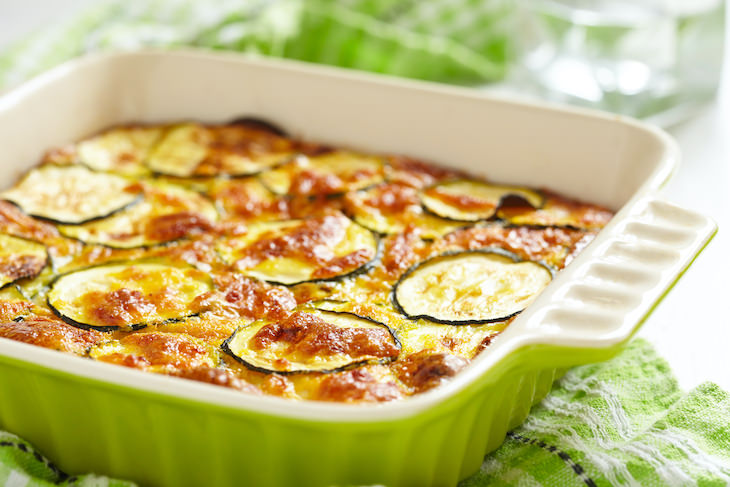
Another group that may taste better with time is protein-rich foods like fish, poultry, and lean meats. When proteins break down they release amino acids such as glutamate, which enhance savory flavor, or those known as umami.
If you don’t like your food very spicy, you might be happy to know that the flavor of peppers becomes more delicate over time. The oxidation reduces the amount of the compound capsaicin in the peppers, which makes them less spicy. Other spices like turmeric black pepper and coriander are also sensitive to air and may lose their intensity over time.
When it comes to reheating, it all depends on how you do it. The reheating process can liberate some of the flavor molecules that may be trapped in fats or inside starch. “While it's the easiest, avoid the microwave," advises chef Nick Evans. "It's a killer to flavor,” he told Eat This Not That. The best way to reheat food is gently, either in a skillet or over low heat.
Still, there are some dishes that do not react to reheating as well as others. Some of the big no-nos according to culinary experts are shellfish and hamburgers. For the latter, it’s largely about the texture. In a good burger, there is a contrast between the crisp exterior and the softer rarer interior. After being refrigerated, however, a burger tends to take on a pebbly gray consistency and color, which can’t be undone.
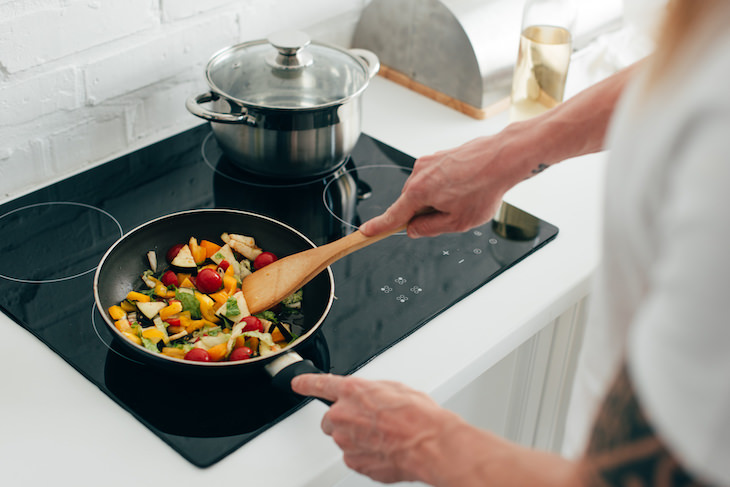
In general, the foods that will best stand reheating are liquid-based ones - soups, stews, and casseroles. The liquids prevent the dish from drying out and creates fewer textural changes. Moreover, the above-mentioned dishes tend to include ingredients like onions, garlic, and spices, which make them appetizing the next day.
The bottom line is, don’t shy away from leftovers! Knowing the basics behind food aging can be really helpful when you want to meal-prep and try to decide on a dish that will last longer.
Share these tips with others!

Have You Ever Tried Duck Eggs? Here’s Why You Should
Duck eggs are becoming increasingly popular, and it turns out they are also highly nutritious even more so than chicken eggs.
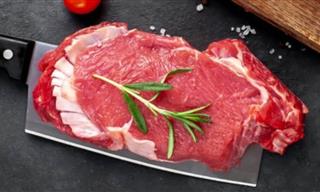 6:21
6:21
6 Cuts of Meat to Stay Away From
While this often comes down to personal taste, there are a few cuts that are generally worth skipping - find out which ones and why.
 2:01
2:01
SAFETY TIPS: What To Do When You Encounter A Wolf
In this important video, an expert breaks down wolf behavior and explains what you should do in the event of a wolf encounter in the wild.

These Food Cravings Could Indicate Health Problems
Studies show that certain food cravings and eating habits could be your body's way of telling you that there is a problem.
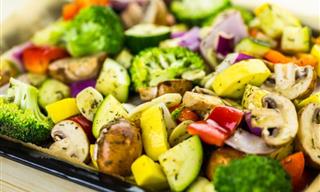
From Can to Gourmet: Cooking Tips for Canned Vegetables
Here are our tips on how to make a delicious meal from canned vegetables.
 4:09
4:09
Why You Should Avoid Boiling Corn On the Cob
Corn on the cob is super versatile. You could steam it, grill it, or bake it. But one popular cooking method is best avoided - boiling. Learn why in this video.

Fix Any Fence Problem With These 10 Video Tutorials!
10 video tutorials that'll cover most fence DIY issues, from fixing various issues to installation and painting.
 10:58
10:58
If You Love Dogs, Then Avoid Doing These Things With Them
Even though you love your dog, you might be annoying it with some of your habits. Watch to find out more...

Comparing Cooking Oils: A Guide for Benefits and Risks
In this article, we'd like to provide a clear, informative comparison to help you choose the right oil for your needs.
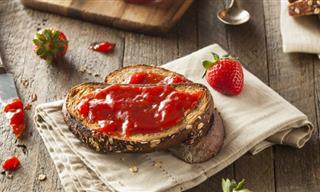
Comparing Health Benefits and Deficits of Popular Spreads
Which spread is the healthiest, and what the risks may be of long-term use?

The Ultimate Guide to All Things Nuts
hether you're a snacker, a cook, or just curious, you'll find plenty of reasons to make these versatile treats a staple in your pantry.

20 Things You Can Do When You're Feeling Anxious
Stress can poison our daily life, but there are some small ways reduce it you can easily try.
 6:58
6:58
How to Make a Simple and Cheap Door Alarm!
Here's how you can save yourself some money by making your own door alarm at home.

Your Old Spices Can Still Work Wonders Around the House
Here are 11 clever ways to use up spices that have lost their zing.

You Don’t Need to Go To A Mechanic to Fix Your Windshield
It can be so frustrating to deal with repairing your windshield. Now the task is made easy with these DIY tricks and tips.

DIY: 6 Methods for Removing Scratches from Eyeglasses
If you wear glasses or know someone who does, you've probably heard them complain about scratches. Now you can fix these scratches with the following 6 tips!

Don't Throw Away That Shower Curtain Liner Just Yet
Here are 10 clever ways to clean, upcycle, or reuse a shower curtain before you throw it away for good.

I Bet You Never Realized How Useful Coffee Grounds Can Be!
Hold it! Don't throw away those old coffee grounds of yours - they have more uses than you can imagine. Read this post for 19 ways to use old coffee grounds.

Fiedler Dependency Model: The Right Leadership for the Task
According to this model, there is no single leadership style that universally fits every situation
 4:34
4:34
Discover the Ideal Morning Routine to Activate Your Brain...
If you struggle to wake yourself up every morning, then this video might just have the perfect solution for you.

Extend the Shelf Life of Your Groceries with These Hacks!
Here are 12 super useful grocery life hacks that will make your groceries last longer and ensure no food is wasted!
 18:31
18:31
These 27 Great Bathroom Hacks Will Make Your Life Easier
Looking for some ingenious bathroom and shower hacks to make your life a lot easier? If so, you’ve certainly come to the right place!
 13:17
13:17
Learn the Best Sleeping Position to Relieve Neck Pain
aking up with neck pain? Your sleeping position might be to blame!

Read This to Deal With That Terrible Smell In Your Fridge!
If there's a bad odor in your refrigerator, then this guide will show you exactly how to get rid of it quickly and easily.
 15:54
15:54
Are You Really Taking Good Care of Your Skin?
Are you really taking good care of your skin? Watch this video to find out about 19 serious skincare mistakes that are unfortunately quite common...

Home Guide: How to Stretch Your Carpet
Whether addressing slack areas in aging carpet or laying fresh carpeting, we've outlined carpet stretching methods that deliver professional-quality results at home.

7 Surprising Items That Should Be Kept in the Fridge
Some surprising items are better off in the fridge than on a cupboard shelf. Here are 7 such items, both food-related and not.
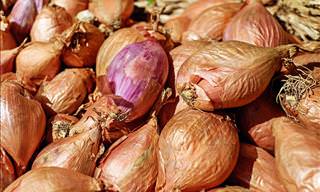
15 Unusual Uses For Onions That Won't Make You Cry
Onions are pretty amazing things. Not only do they make cooking taste much better, they also have 15 surprising household uses. You've never seen these before!

Impress Guests With 14 Nifty Napkin Fold Styles!
This terrific video tutorial will show you 14 easy-to-do napkin folding styles that are creative, whimsical and will guarantee your guests approach the tables with admiring smiles.

12 Tips to Maximize Counter Space in Small Kitchens
These hacks will transform your kitchen counter space.

Is Your Garden Healthy? Test It with These Soil Tips
How healthy is your garden? Test it out with these helpful tips.

This is Why Paper Towels Are an Invaluable Necessity
If you're only using your paper towels to mop up the occasional kitchen accident, you're sure missing out. Here are 6 other uses for paper towels.
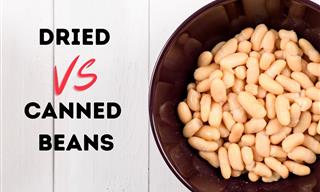
Dried vs. Canned Beans: Which Is the Better Option?
Can't decide between dried and baked beans? Here, we'll compare the two varieties and help you decide which option best suits your needs.

Maintain Your Kitchen Appliances for Longer with this Guide
Learn how to clean and maintain appliances so that they last for years to come.

Hard Water - 9 Ways It Affects You and Your Home!
Not all water is the same. Hard water can have a negative effect on your budget, home, garden, and even your body.
 9:55
9:55
Grimy Oven? Get It Sparkling Clean in 5 Minutes!
These tricks will help you clean your oven in minutes.

How to Make Sure No Spider Enters Your Home
Tired of 8 legged monstrosities roaming your house? It's time to put a stop to it, the natural way.

Pros & Cons of Cleaning Pods vs Powder vs Liquid
When choosing between liquid detergent, powdered detergent and single dose pods, there are a few things you should consider.

So You Think You Shop Online Safely? This May Surprise You
If you shop online, you need to know how to avoid fake websites and low quality goods. For these and more online shopping tips, read this article.

Boost Your Happiness in These 22 Small, Easy Ways
Do these little things every day, to make you feel happy.

62 Great Uses For Things You Have at Home!
If you keep finding random objects around your house such as rubber bands and old clothespins, don't throw them away just yet!

There's Not Much Castor Oil Can't Do!
Castor oil is one of those rare substances that can be used for just about anything!

Drilling Holes In Your Bin Can Make Your Life Much Easier!
Drilling holes in your trash can? Yes! Learn two easy tricks that will make taking out the trash much easier

How to Get Rid of 6 Common Pantry Pests
Don’t let pesky little bugs wipe out your expensive food supplies and learn how to recognize and get rid of 6 common pantry pests with this informative guide.

Should You Preheat the Car Engine When It’s Getting Cold?
Experts say that leaving the engine run idle in cold weather is both a waste of your money and terrible for the car engine and the environment.

14 Uses for Rice that Have Nothing to do With Eating
Rice is an incredibly versatile grain - you can do much more with it than just cook it and eat it! Find out 14 uses for the grain that you never knew.

8 Terrific Additional Uses For Rubbing Alcohol!
Unsure about what you're meant to use rubbing alcohol for? Wonder no longer, as we've listed 8 brilliant uses of rubbing alcohol in this article.
To enable your Ad-Free Subscription, please fill the fields below
Your subscription was successful, now you can enjoy an ad-free experience!! Note: To make sure you get no ads, please make sure to log in to your account. If you are logged in already, then refresh the page. The subscription can be cancelled at any time.


